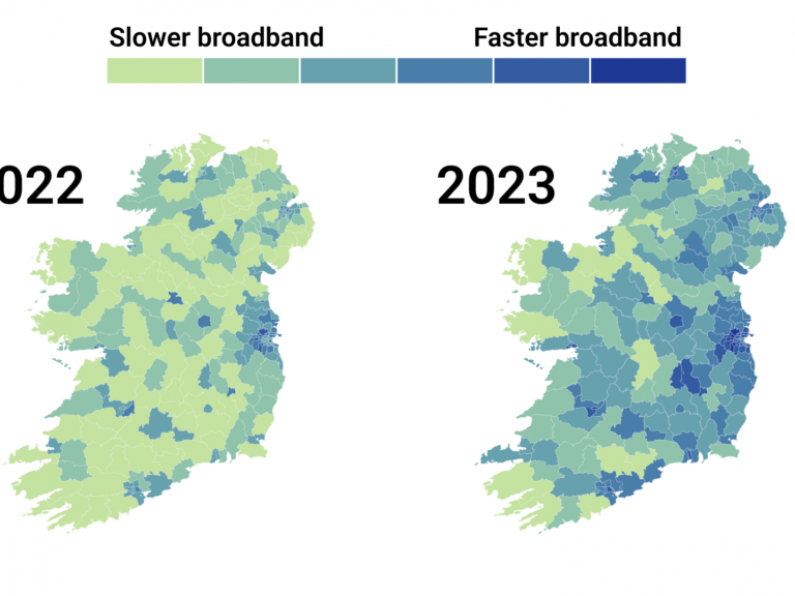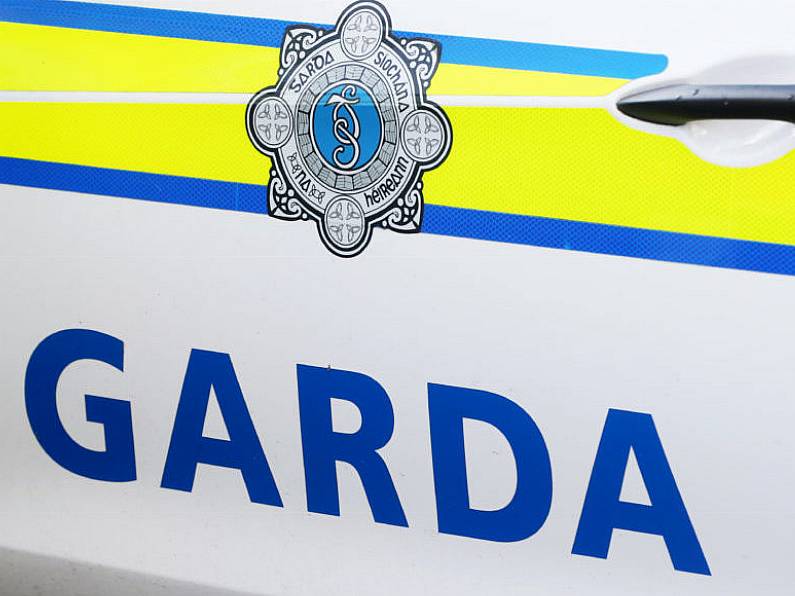Broadband speeds in Ireland are faster than ever, but the gap between rural and urban areas has widened, according to new data.
A detailed analysis by breakingnews.ie of data from Ookla, a company that tests internet speeds, shows that households across the country are enjoying quicker broadband connections.
Download speeds nationally have increased by more than 45 per cent since early 2022, with Co Laois alone seeing an 82 per cent jump.
The improvement comes as major infrastructure projects continue on both sides of the Border to connect rural homes to high-speed fibre broadband.
However, there is still a digital divide. Many remote areas have average speeds below the European Union's target of 100Mbps (megabits per second), while a widening gap of almost 230Mbps stands between the fastest and slowest areas.
The analysis used the results of speed tests conducted by Ookla users in Ireland since 2022. More than 600,000 tests were carried out on average during each quarter. Each test was geolocated and mapped to local electoral boundaries to give the mean download and upload speeds for each area.
Of the 20 areas with the highest average download speeds, 14 are located in Dublin, with the remainder spread across Belfast, Carlow, Waterford, Westmeath, Kildare and Derry. The parts of the country with the worst connectivity are in Leitrim, Mayo and Cork.
You can use the interactive map and table below to check the average internet speed in your area, based on thousands of tests conducted in recent months.
Fastest broadband
The areas with the fastest broadband are in west Dublin – Tallaght, Lucan, Ongar, Palmerstown and Blanchardstown make up the top five with download speeds averaging at least 250Mbps.
Quick internet is also found in towns further from the capital. Carlow, Mullingar, Longford, Portlaoise and Wexford have average download speeds surpassing 200Mbps, according to tests carried out from July to September this year.
Rural areas in the west and south tend to have the slowest connections. Ballinamore in Co Leitrim has an average download speed of only 53Mbps – 229Mbps slower than first-place Tallaght South.
Close behind is Swinford in Co Mayo with 59Mbps, while Fermoy in Co Cork averages at 65Mbps.
A 50Mbps broadband connection would still allow users to comfortably browse the internet and stream videos. But they may run into difficulty if they have high usage needs, like a remote job that requires large downloads and uploads.
Some of the biggest improvements in internet speed are in counties where the rollout of fibre broadband is gathering pace.
The Government is aiming to deliver high-speed internet services to more than 500,000 premises in the Republic under its National Broadband Plan (NBP). Despite early controversies and delays to the project during the coronavirus pandemic, the rollout has been making better progress over the last year.
More than 200,000 households, farms and businesses targeted by the plan now have access to fibre connections, according to the company responsible for delivering the rollout, National Broadband Ireland (NBI).
The latest figures from the communications regulator ComReg also seem to confirm this – fibre connections are now the most commonly purchased broadband technology in Ireland, with subscriptions increasing by 34 per cent in the year to March 2023.
Progress
The NBP rollout has made the most progress in Laois and Monaghan, where 76 per cent and 62 per cent of targeted premises had access to a fibre connection by the end of October this year, according to NBI.
That compares with only 13 per cent of targeted premises in Offaly and a mere 8 per cent in Leitrim.
Laois and Monaghan have also seen some of the biggest improvements in download speeds since the beginning of last year. According to the Ookla test data, average speeds in Laois have increased from 106Mbps to 192Mbps, an 82 per cent jump, while speeds in Monaghan have risen from 113Mbps to 169Mbps on average, up almost 50 per cent.
Kilkenny, another county where the NBP has made good progress, has seen average broadband speeds increase by 77 per cent – jumping from 92Mbps early last year to 163Mbps by the third quarter this year.
Improved internet speeds in Northern counties may also be due to a publicly financed infrastructure project.
Project Stratum, which is being funded by the Northern Executive and delivered by a private company called Fibrus, aims to bring “hyperfast” fibre broadband to approximately 76,000 rural homes and businesses across Northern Ireland.
The rollout is scheduled to be completed by the end of next year, and has been mostly unaffected by the collapse of the powersharing institutions at Stormont.
Ireland is on a full-fibre diet and broadband speeds will almost certainly continue to rise nationally.
But it remains unclear if the gap between urban and rural connectivity will begin to close, or if Ireland’s new infrastructure will be able to keep pace with ever-evolving changes in technology and communications.
Tomas Doherty
Keep up to date with all the latest news on our website Beat102103.com.






